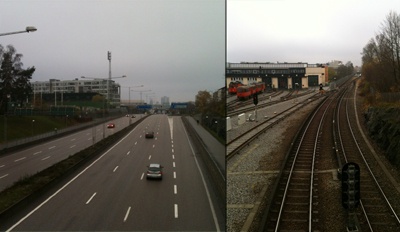
Uploaded on 2014-11-20 by DanLar81
In the years following the Second World War up until the sixties there was a housing shortage on the rise in Sweden. In the period of 1965-1974 this issue was addressed by the government through the “Million Program”. A massive housing development programed aimed at building one million new homes all across Sweden. In Stockholm several new municipalities was created on the outskirts of the city. As the ideology of modernism proscribed these new areas was connected to the city with highways, but also by a subway system. Many of these where not dug down due to the cost of such an enterprise. This has left a legacy of ground level infrastructure that today is dividing the city fabric. In the new era of densification there is a conflict between this infrastructure and the need of new housing developments. Often the sites available are cut off by the infrastructure and are hence hard to integrate into the rest of the city fabric. At the same time these corridors of transportation are vital to the city. There is the option of having them relined underground but this would be an immense strain on the cities economy. In short we cannot live either with or without this infrastructure. ![Highway and Subway lines drawn at the same level as the rest of the city fabric.][1] [1]: https://edxuploads.s3.amazonaws.com/14165140661454204.jpg